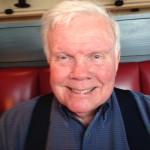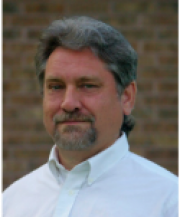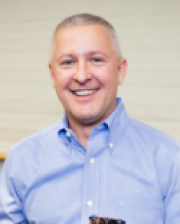Military Pilot / VP of Administration / Entrepreneur – Mentor, Phillip Kirk
This mentor discovered that he had symptoms of the medical condition ADD when he was fifty-five a condition that most people assume would limit someone’s ability to build a successful career. That would have been a wrong assumption for this Mentor. By that time he had served as a Navy fighter pilot, graduated from college and had risen to the position of Executive VP for a NYSE company. He later went on to start his own business in the road construction industry using equipment he and his partner had improved upon to rehabilitate concrete highways. The business grew and these machines were used on road construction projects all over the world. Since retiring, he has been active in helping people in substance abuse programs as well as working as a Unit Leader of the Commemorative Air Force, a nonprofit organization that owns 161 vintage WWII military aircraft used in air shows around the country. Phillip Kirk is an inspirational figure for young people struggling with ADD and who have been told their future was limited by this condition. His story is also a testament to the power of persistence and hard work in achieving success in business and in life.
Overview
 My father was an attorney as was my uncle. So I grew up around accomplished people who worked hard. When I graduated from high school at seventeen, I wanted a professional career like my father and decided to become a doctor. Although my grades were not consistent, I tested well and was accepted at the University of Oklahoma for pre med. But before I went to college, my father had a talk with me and explained that once I left home for college the family rules changed. He told me that when I came home now, I would be considered a welcome guest but that I would never be living there again. He wanted to see me around the holidays but he expected me to live independently and should never consider moving back home an option if things got difficult in my life. Not having a safety net was a real motivator for me and forced me to become independent.
My father was an attorney as was my uncle. So I grew up around accomplished people who worked hard. When I graduated from high school at seventeen, I wanted a professional career like my father and decided to become a doctor. Although my grades were not consistent, I tested well and was accepted at the University of Oklahoma for pre med. But before I went to college, my father had a talk with me and explained that once I left home for college the family rules changed. He told me that when I came home now, I would be considered a welcome guest but that I would never be living there again. He wanted to see me around the holidays but he expected me to live independently and should never consider moving back home an option if things got difficult in my life. Not having a safety net was a real motivator for me and forced me to become independent.
I did not do well my first semester of college. It was hard for me to concentrate on my studies for full semester because of what I now know was probably ADD. But I also had the ability to “Hyperfocus” for short periods of time especially on things that interested me. At this time in the 1950’s, attention deficit disorder was not well known and I was never actually diagnosed with this leaning disability. But at that point in my life, the combination of the inability to focus on long term tasks and being that young was not going to allow me to be successful in college and become a doctor. So I decided to go into the Navy and look at a military career. I tested well just like I had for college and was given the option to become a pilot. This was an unusual opportunity. At that time most military pilots were college graduates. When I went to Pensacola, Florida for my Navy flight training, I was the only seamen second class. This status also provided me extra incentive to succeed because if I washed out of the pilot’s program, none of the time I spent would go towards my six-year minimum commitment. Because the individual classes ran for between 30 and 45 days, I was able to stay focused and graduated in the top 25% of my class. This ranking allowed me to qualify for fighter pilot school while those with lower rankings ended up flying planes like transports. Initial fighter pilot training was in Corpus Christi, Texas where we practiced taking off and landing on aircraft carriers, etc. At one point in that training we were all lined up and a naval officer walked by and pointed to me and several other pilots and told us to step out. He said that we had been chosen to train in the new A-4 attack aircraft. That aircraft had a small cockpit and all of us who were chosen were less than six feet tall. I flew briefly with John McCain, who is now a US Senator. After my six year enlistment was up, I left the Navy as I knew by then that I didn’t want a lifetime career flying military aircraft.
When I returned to civilian life, I immediately went back to college. I was more mature after my military experience, but I still did not know what I wanted to do. In fact, throughout my entire life I never had a good idea about what is was I wanted to do for a career. I always admired people who as early as high school understand their strengths and what career they want to pursue. But that was never me. I learned that for myself and other people who also don’t have an early career focus, the most important thing is to try to find an area that interests you, go out and get a degree or training that would allow you to pursue your interests and then see what happens. Get in the arena and don’t sit on the sidelines waiting to decide every detail. For me, I had an interest in politics and chose political science as a college major.
The cost of college was on me. Although I did get help from the GI bill, I still needed to work while I was taking classes. I tried working as a clerk in a retail-clothing store. But it did not pay enough money. I needed another job and looked on the college bulletin board where there were job postings. I found one that paid three times what I was making as a clerk. The job involved working with the local retail sales clerk union as a business agent. In this job I tried to get people to sign up for union membership and hold elections to allow my union to represent them. The minimum wage paid retail clerks back then was low, too low for people to earn a decent living. While we never promised people we would be able to raise their wages, most people understood the value of collective bargaining. Consequently, I was able to get many company employees to vote on being represented by a union and never lost and election. I kept that job until I graduated in 1967 when I was 27 years old.
One of my professors in college taught constitutional law and was previously with one of the best local law firms that had a number of large corporate clients. He told me that a drilling company was having problems with their labor union in Alaska and asked if I would be interested in helping them. I had another job lined up for after graduation, but I met with the president of the drilling company, was offered more money and took the job. I went to Alaska and was able to resolve the union issues in three months. When I got back, I was put in an administrative position working with the company’s president and the chairman, who was also a military pilot like me in WWII. We got along well and he offered me the opportunity to write the company’s annual report, something he no longer wanted to do himself. It was a great learning experience for me as I was able to work with the company’s lawyers and accountants and a graphic art and printing company that I had known. I made the report a little different by putting the accounting and financials on a different paper stock and not binding it to the report so that the financial analysts could more easily organize the material in their files. The only negative comment I got from upper management was that the font size was too small for older men like them, who were the primary executives and shareholders, to easily read. I was told not to make the font size less than 14. But other than that one thing, they were pleased with my work on the report and with the way I had performed the other administrative duties they had been assigning to me. I worked five years as an administrative VP taking on more and more responsibility and was then promoted to Executive VP where I worked for another five years.
Although I was making good money, I got bored and left to work for a company that consulted on compensation for the executive officers of large corporations. The company advised on salary levels, stock options, did financial planning involving ways to mitigate taxes and designed life insurance plans to protect the employee and the company. The presentations were given to the Board of Directors. Although I was dealing with business executives at the highest levels, I found after four years that I did not enjoy the marketing process and was open to new opportunities. That is when a new door opened for me.
An engineer who I knew from working at the drilling company had also left about the same time I did and had come across a person who had invented a piece of equipment use to break old concrete on highways. Often old, cracked concrete highways are refurbished by resurfacing them with asphalt. But before asphalt can be applied, the concrete has to be fractured so that it will provide a flexible base for the asphalt resurfacing like gravel does when a new highway is built entirely of asphalt. This machine, which rode on four large tires and weighed 60,000 pounds, had the capability of putting multiple fractures in the concrete making it look like a jigsaw puzzle. This fracturing provided the flexible base needed for the asphalt surface without having to remove the concrete. The problem was that the equipment the inventor had designed was not reliable and too slow to be economic based on what he had to sell the equipment for in order to make a profit. While my engineer had figured out how to improve the equipment so that that it would be more reliable and efficient, the inventor did not want to accept his suggestions. So my friend wanted to buy one of the machines and make the modifications himself. But that was expensive and selling machines did not seem to me to be a good business model. Instead we located a Caterpillar dealer in Iowa who had bought four of the machines and was not able to resell them. I offered him a deal where we would take one of the machines, make the improvements and then contract with highway construction companies on a per square yard basis to break up old concrete and prepare it for asphalt resurfacing. He would get a portion of that revenue. This was a good arrangement for the dealer who had four machines rusting in his lot and for us as we could concentrate our investment on improvements that would make the units more productive. The modifications dramatically increased productivity. The original design by the inventor was only able to do 2,000 square yards of concrete in an 18-hour day, something that required two work shifts. After our modifications and continued improvements, we were able to do 10,000 feet of concrete in 10 hours with one crew. We eventually purchased or manufactured 26 machines and operated them all over the world including China and Russia. I ran this company for twenty-two and half years, sold it in 2006 and retired from business.
After I retired, I went back to graduate school at the age of sixty six to learn about addictions and the neurological process of cravings. Early in my corporate career, I did a lot of entertaining and developed an addiction for alcohol. I stopped using alcohol altogether with the help of AA of which I am still a member today. With the introduction of the functional MRI, it is now possible to see what happens in the brain of addicted people, knowledge that is bringing us closer to finding better ways to treat addiction. I did a lot of research of the literature, wrote an article on the subject and was invited to give lectures to groups of physicians dealing with their patients’ addictions.
I had always loved to fly and still maintain my pilot’s license. I also owned a vintage WWII military aircraft, an SNJ which is the Navy version of the T-6. at one time. This interest led me to become involved in the CAF (Commemorative Air Force.) The CAF has 161 military aircraft with 126 refurbished and operating. We put on air shows around the country and have just received permission to fly over the National Mall in Washington DC for the seventieth anniversary of WWII.
How to Prepare Yourself as You Choose a Career Path
While I always admired people who seemed to have a clear idea of what career they wanted to pursue, I know many people like myself who never have a clear idea of what career path to follow. For people like us, it is important that you get engaged. Find something that you are interested in and take steps to pursue it. Here is one example. I have a good friend who all he wanted to do when he was young was race cars. He pursued that passion and became a race car driver. While doing that he found there were only a few machine shops around that could build engines and make the modifications to his cars that he needed to be competitive at the highest levels. So he started doing this mechanical work himself. He later bought a lathe and started doing machining. He grew that machine business over the past thirty years into one of the largest machine shop in the state with seven figure profits.
It is also important to be persistent. Too many people get discouraged and quit when they encounter adversity. If you feel you are pursuing a worthwhile career goal, work through adversity and try and learn from it. There are always going to be difficulties in your life that you must confront.
Owning your own business is a worthwhile goal to consider. It allows you control your own destiny for better or worse and can bring you a lot of satisfaction. I also think that creating jobs and making a payroll is a real service to society.
Summary
I have had a lot of good things happen in my life. Some might say that this was in large part luck. But a lot of it was because I was engaged in trying to advance my career, willing to try new things and always fully committed to whatever studies, job or business I decided to pursue. The harder you work and the more you preserve the luckier you will become.
US Bureau of Labor Statistics
Military Pilots
The pay range for military pilots today is based on rank and years in service and range between $5,000 and $7,000 a month. But in addition to receiving basic pay, members of the military are housed free on base or receive a housing allowance and other benefits like free medical care and retirement pensions.
Corporate Administrative Service Mangers
The average salary for Corporate Administrators was $81,080 per year as of the Bureau’s last survey in 2012. Executive VPs at large corporations make considerably more, from $300,000 to $5,000,000, but were not part of the Bureau’s salary survey.
There were 280,000 people employed in these positions in 2012. Job growth was expected to be 12% between 2012 and 2022, or about as fast as average employment.





